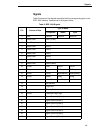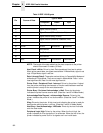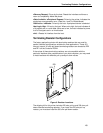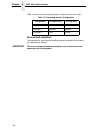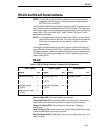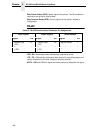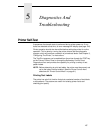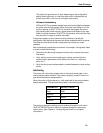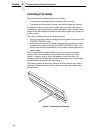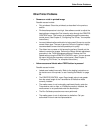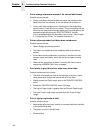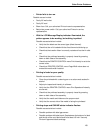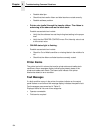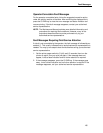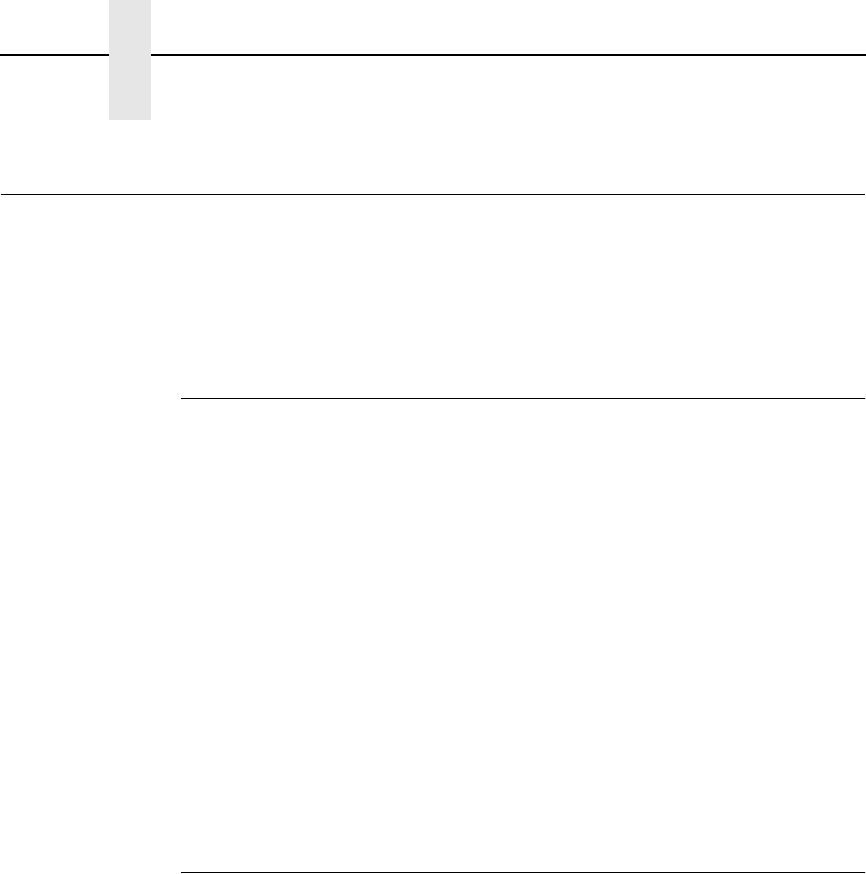
188
Chapter 5 Troubleshooting Common Situations
Troubleshooting Common Situations
Occasionally, situations occur that require some troubleshooting skill.
Possible problem situations and potential solutions are listed in this section.
While not every conceivable situation is addressed here, you may find some
of these tips helpful. Contact a qualified service technician for problems that
persist or are not covered in this section.
Improving Processing Time
Before looking at solutions for decreasing processing time and increasing
throughput, it may help to understand what happens during processing. When
the printer receives a format command, it enters the label formatting mode.
Label formatting requires time to process the label data into the printer
buffers.
The time required varies, depending on the complexity of the label format and
on the size of the area being printed. Once the data has been mapped into
memory, the printer will start printing as many labels as requested by the
quantity command. In most cases, there is no delay between labels; however,
there are certain situations that may cause delays between label printing:
• Using the cutter option:
The printer must stop and wait for the cutter to execute the cutting cycle.
• Using Automatic Label Peel-Off or Tear-Off media handling:
The printer stops between each label and waits for the label to be
removed.
Data Exchange
Many things can cause data loss or communications problems. This section
suggests some ways to isolate these problems and determine their cause.
Handshaking
Handshaking is the exchange of signals between two computers (or a
computer and a peripheral input or output device) to indicate the status of the
data being transferred. In the serial mode, the printer uses both hardware and
software handshaking and transmits both forms simultaneously when the
input buffer is full.
The printer can be used with either serial or parallel host interfaces. Parallel
interfaces are usually straightforward, with no special settings required. Serial
interfaces, however, have a variety of possible communication parameter
settings. The two methods of handshaking that can be used, hardware and
software, are explained below.
• Hardware Handshaking
These electrical signal are controlled by the logic states on pins 4 and 20
of the serial interface connector J2 (at the back of the printer).
The signals will go either low or high, depending on the configuration
setting, when the printer is ready to receive data.




